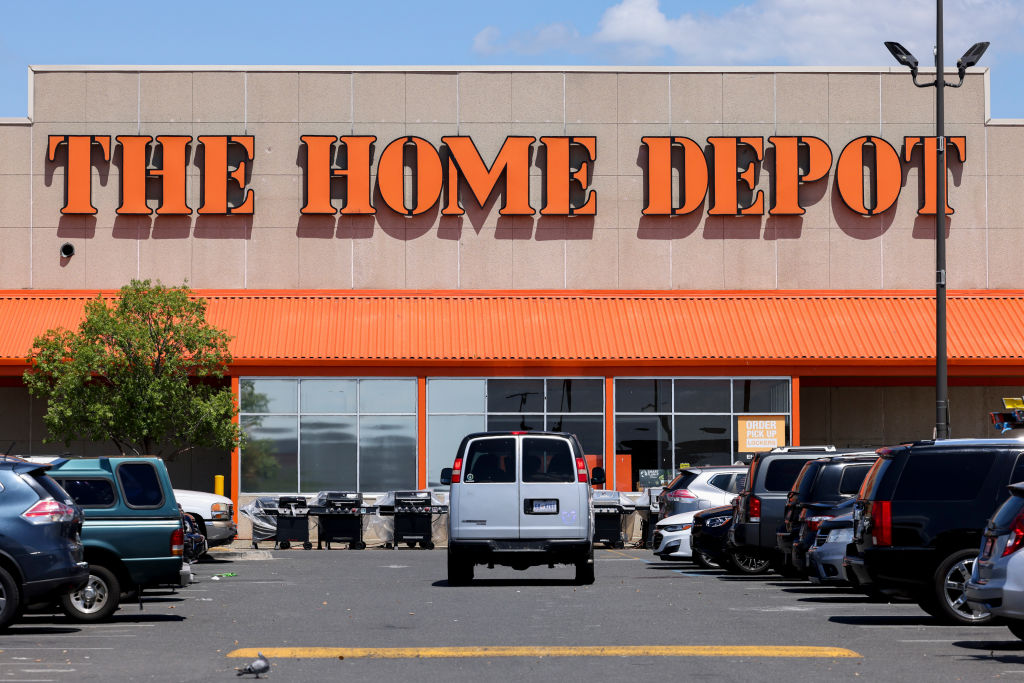Election Years Bring Stock Gains
Or is it that stock market gains bring election wins?

Last year's political gridlock did a number on the stock market, as Washington brinksmanship (among other crises) translated into frustration on Wall Street. This year, though, politics might work in the market's favor. That's because the market has traditionally gone up in election years.
SEE ALSO: Be a Better Stock Investor
Since 1900, when Republican William McKinley won reelection to the White House, the Dow Jones industrial average has gained an average of 7.3% in presidential election years, according to InvesTech Research, a market-research firm. If you exclude 2008, the depth of the financial crisis, the average gain climbs to 8.8%. Top stock sectors in election years: energy and consumer staples, says Standard & Poor's.
From just $107.88 $24.99 for Kiplinger Personal Finance
Become a smarter, better informed investor. Subscribe from just $107.88 $24.99, plus get up to 4 Special Issues

Sign up for Kiplinger’s Free Newsletters
Profit and prosper with the best of expert advice on investing, taxes, retirement, personal finance and more - straight to your e-mail.
Profit and prosper with the best of expert advice - straight to your e-mail.
Time to call your broker? There's no rush. Election-year gains often come in the final months; for much of the year, the market is directionless as investors anguish over the upcoming election. And anyway, the current four-year election cycle has been anything but typical. For example, year three is usually the best year, with the S&P 500-stock index logging an average 17% gain going back to 1941. Last year was year three in the current cycle, but the S&P finished flat. Which opens up a statistical can of worms. When Sam Stovall, S&P's chief equity strategist, looked into election years that were preceded by disappointing third years, he found that the S&P fell in five of those six cycles; the average election-year decline was 10% (the nearly 40% decline in 2008 didn't help).
A third shuffling of the statistical deck shows yet another, more positive facet of election years. Paul Hickey, of Bespoke Investment Group, has found that market gains in election years in which an incumbent is running are nearly double, in percentage terms, the gains logged when incumbents are not running.
Numbers aside, the rationale for election-year gains is simple. They aren't as much caused by the election as they are correlated with an election campaign. "If a president has any political foresight, he will get the bad news out of the way early -- such as policy decisions that might slow the economy -- so that by the time he's running for reelection, the economy is firing on all cylinders and the path to the White House is paved with rising confidence and rising stock prices," says InvesTech's Jim Stack. Few people would characterize the current economy as "firing on all cylinders," although some recent indicators have been encouraging.
If past elections offer a murky view of how the market will do, looking at what the market is doing provides a clearer picture of how the election will turn out. Just watch the Dow in the two months before the election. Gains or losses during that period augur a win or a defeat, respectively, for the incumbent party, with a nearly 90% success rate.
And if you really want to go crazy with statistical indicators, consider two of them together. The "January barometer," which says that gains in January portend gains for the year, looks good: The S&P 500 rose by 4.5%, its biggest first-month gain since 1997. Even better news, according to Stovall, is that the January barometer, when it points to full-year gains, has a 100% accuracy rate in presidential election years.
Profit and prosper with the best of Kiplinger's advice on investing, taxes, retirement, personal finance and much more. Delivered daily. Enter your email in the box and click Sign Me Up.

Anne Kates Smith brings Wall Street to Main Street, with decades of experience covering investments and personal finance for real people trying to navigate fast-changing markets, preserve financial security or plan for the future. She oversees the magazine's investing coverage, authors Kiplinger’s biannual stock-market outlooks and writes the "Your Mind and Your Money" column, a take on behavioral finance and how investors can get out of their own way. Smith began her journalism career as a writer and columnist for USA Today. Prior to joining Kiplinger, she was a senior editor at U.S. News & World Report and a contributing columnist for TheStreet. Smith is a graduate of St. John's College in Annapolis, Md., the third-oldest college in America.
-
 Stocks Chop as the Unemployment Rate Jumps: Stock Market Today
Stocks Chop as the Unemployment Rate Jumps: Stock Market TodayNovember job growth was stronger than expected, but sharp losses in October and a rising unemployment rate are worrying market participants.
-
 Should You Renew Your CD?
Should You Renew Your CD?With rate cuts impacting earnings, we examine if now is a wise time to renew CDs.
-
 7 Ways to Plan Now to Save on Medicare IRMAA Surcharges Later
7 Ways to Plan Now to Save on Medicare IRMAA Surcharges LaterUnderstand the critical two-year lookback period and why aggressive planning before you enroll in Medicare is the most effective way to minimize IRMAA.
-
 What to Expect from the Global Economy in 2026
What to Expect from the Global Economy in 2026The Kiplinger Letter Economic growth across the globe will be highly uneven, with some major economies accelerating while others hit the brakes.
-
 If You'd Put $1,000 Into Coca-Cola Stock 20 Years Ago, Here's What You'd Have Today
If You'd Put $1,000 Into Coca-Cola Stock 20 Years Ago, Here's What You'd Have TodayEven with its reliable dividend growth and generous stock buybacks, Coca-Cola has underperformed the broad market in the long term.
-
 If You Put $1,000 into Qualcomm Stock 20 Years Ago, Here's What You Would Have Today
If You Put $1,000 into Qualcomm Stock 20 Years Ago, Here's What You Would Have TodayQualcomm stock has been a big disappointment for truly long-term investors.
-
 Shoppers Hit the Brakes on EV Purchases After Tax Credits Expire
Shoppers Hit the Brakes on EV Purchases After Tax Credits ExpireThe Letter Electric cars are here to stay, but they'll have to compete harder to get shoppers interested without the federal tax credit.
-
 Amid Mounting Uncertainty: Five Forecasts About AI
Amid Mounting Uncertainty: Five Forecasts About AIThe Kiplinger Letter With the risk of overspending on AI data centers hotly debated, here are some forecasts about AI that we can make with some confidence.
-
 Worried About an AI Bubble? Here’s What You Need to Know
Worried About an AI Bubble? Here’s What You Need to KnowThe Kiplinger Letter Though AI is a transformative technology, it’s worth paying attention to the rising economic and financial risks. Here’s some guidance to navigate AI’s future.
-
 If You'd Put $1,000 Into Home Depot Stock 20 Years Ago, Here's What You'd Have Today
If You'd Put $1,000 Into Home Depot Stock 20 Years Ago, Here's What You'd Have TodayHome Depot stock has been a buy-and-hold banger for truly long-term investors.
-
 Will AI Videos Disrupt Social Media?
Will AI Videos Disrupt Social Media?The Kiplinger Letter With the introduction of OpenAI’s new AI social media app, Sora, the internet is about to be flooded with startling AI-generated videos.